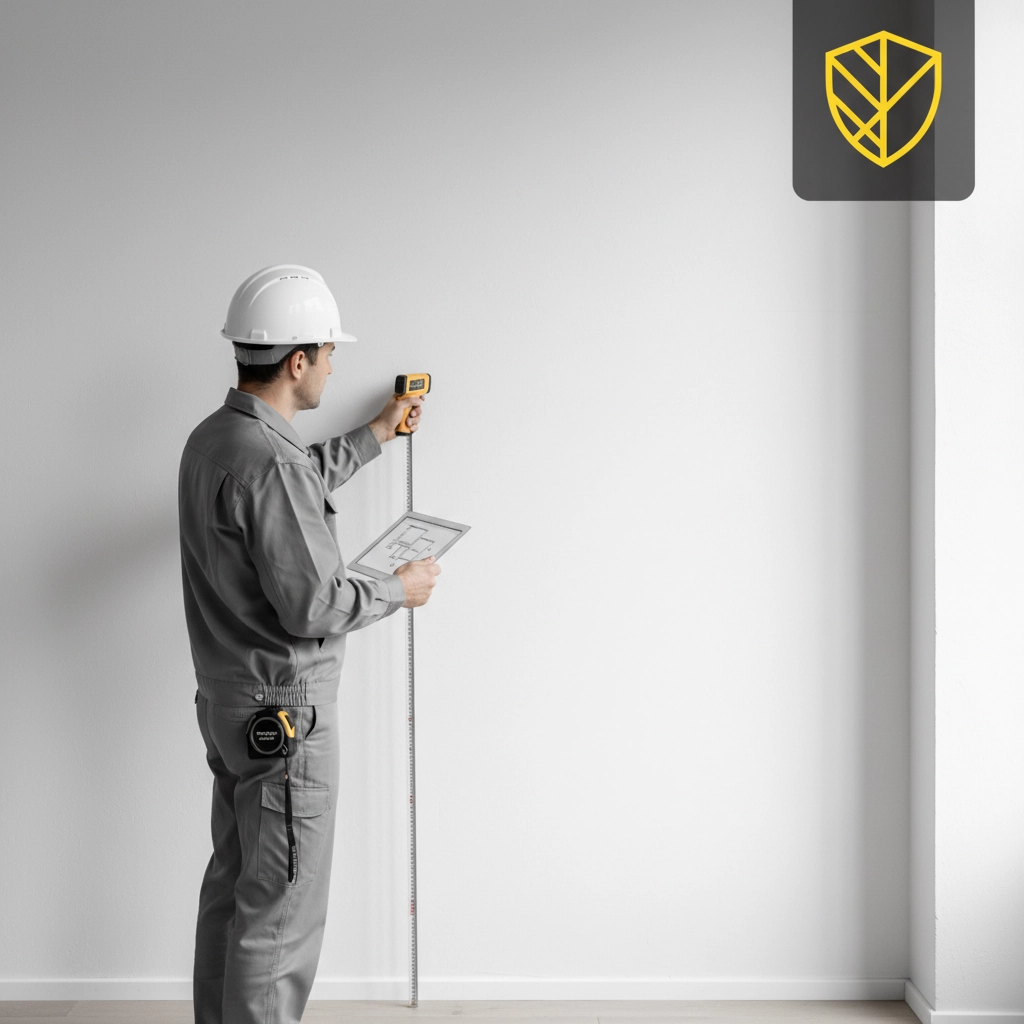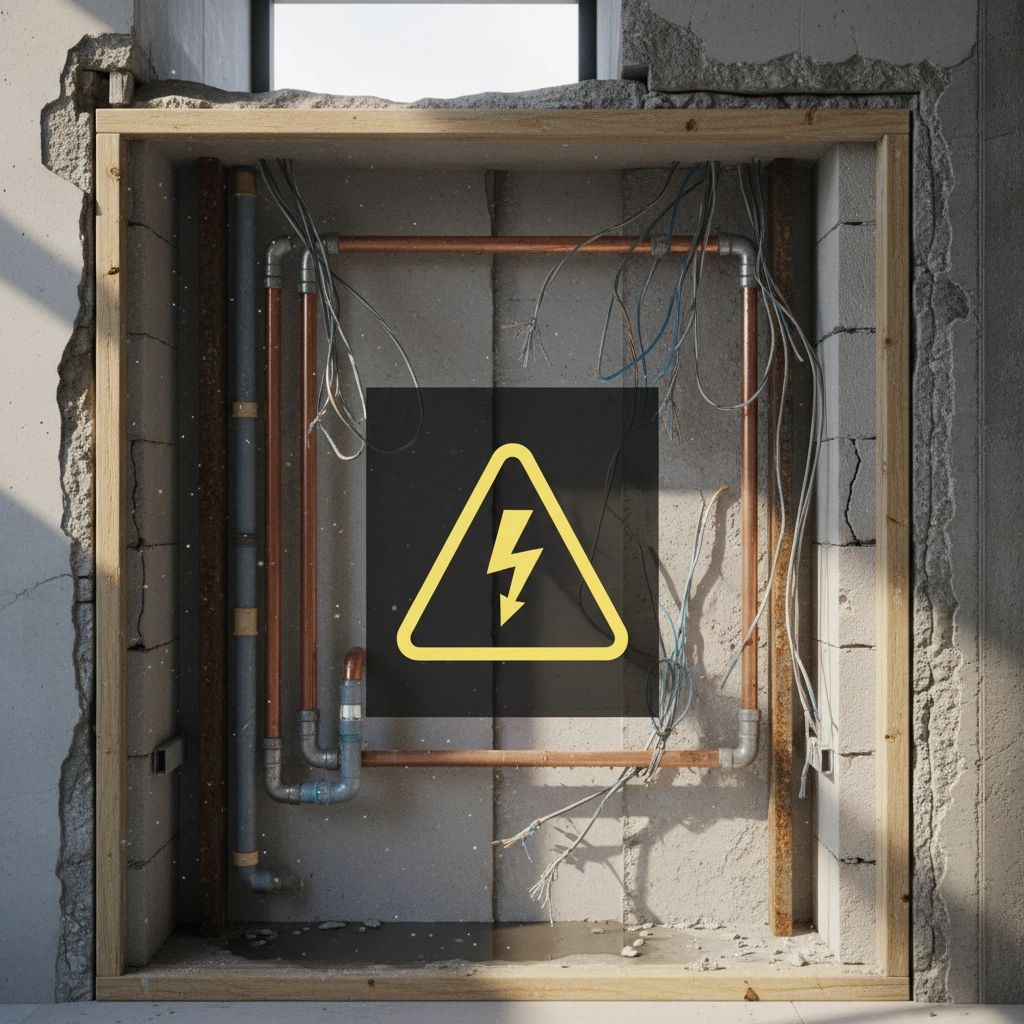New Build Defects 101: A Buyer’s Guide to Understanding Why £300 Could Save You Thousands

Buying your first new build home should be exciting, right? You’re getting a property that’s never been lived in, with all the latest fixtures and modern conveniences. But here’s the reality check: 93.7% of new build buyers report problems with their homes after moving in, with over a quarter discovering more than 15 separate issues.
That dream home might come with some unwelcome surprises: and once you’ve moved in, fixing them becomes your problem (and expense). But here’s the good news: spending around £300 on professional property snagging before you get the keys can save you thousands down the line.
Let’s break down everything you need to know about new build defects and why that small upfront investment could be the smartest money you’ll ever spend.
What Exactly Are New Build Defects?
Not every imperfection in your new home counts as a “defect.” There’s a crucial difference between genuine defects and minor cosmetic issues: and understanding this difference could save you a lot of frustration.
Real defects include:
- Leaking roofs or plumbing systems
- Doors that won’t close or lock properly
- Major wall or ceiling cracks
- Faulty electrical installations
- Improperly fitted windows that don’t seal
- Structural issues affecting the building’s integrity
What doesn’t count as a defect:
- Paint scuffs or small chips
- Hairline cracks thinner than a £1 coin (this is normal settling)
- Garden maintenance issues
- General wear and tear after you move in
The key point? Genuine defects are the builder’s responsibility to fix: but only if you spot them and report them within your defect liability period.

Why New Build Defects Are So Common
You might wonder why brand-new homes have so many problems. The truth is, modern construction timelines are incredibly tight. Developers are under pressure to complete projects quickly, and with complex builds involving multiple trades working simultaneously, things can slip through the cracks.
Common causes of new build defects include:
- Rushed construction schedules leading to corner-cutting
- Poor coordination between different trades
- Material defects that aren’t spotted during construction
- Inadequate quality control during the building process
- Weather damage during construction that goes unnoticed
The unfortunate reality is that many developers rely on buyers to spot these issues after completion, rather than investing in thorough pre-handover inspections.
The £300 Investment That Pays for Itself
Here’s where professional snagging surveys come in. For around £300, a qualified inspector will spend several hours going through your property with a fine-tooth comb, identifying defects you’d likely miss as an untrained eye.
What makes professional snagging worth every penny:
Professional inspectors understand NHBC guidelines and construction standards inside and out. They know exactly what constitutes a legitimate defect versus normal building behavior. More importantly, they create comprehensive, documented snagging lists that carry weight with developers: something your handwritten notes might not achieve.
The financial protection this provides is substantial. Once your defect liability period expires (usually 12 months from completion), any repairs become entirely your responsibility. A £300 inspection that identifies issues like faulty drainage, electrical problems, or structural defects can prevent repair bills running into tens of thousands of pounds.

Common New Build Defects That Cost Buyers Big
Let’s look at some real-world examples of defects that could hit your wallet hard if missed:
Plumbing and Drainage Issues
- Leaking pipes behind walls: Could cost £2,000-£5,000 to access and repair
- Poor drainage: Might require extensive groundwork costing £3,000+
- Faulty bathroom installations: Replacing incorrectly fitted suites can cost £1,500-£4,000
Electrical Problems
- Faulty wiring: Rewiring sections of your home could cost £1,000-£3,000
- Inadequate earthing: Safety issues requiring professional electrical work (£500-£1,500)
- Poor socket installations: Multiple socket replacements and wall repairs (£300-£800)
Structural Concerns
- Foundation settling issues: Major repairs could cost £10,000+
- Roof defects: Roof repairs or replacement could cost £5,000-£15,000
- Window and door problems: Replacement costs can reach £500-£1,200 per unit
Heating and Insulation
- Inadequate insulation: Retrofit insulation could cost £2,000-£4,000
- Heating system faults: Boiler replacement or major repairs (£1,500-£4,000)
The pattern is clear: what costs £300 to identify professionally could cost thousands to fix once it becomes your responsibility.

Understanding Your Defect Liability Period
Timing is everything when it comes to new build defects. Your defect liability period typically runs for 12 months, but here’s the catch: it usually starts from when the property is handed over to the housing association or developer, not when you move in.
If you’re buying through shared ownership or there’s a delay between completion and moving in, you might have less than a full year to identify problems. This makes early professional inspection even more crucial.
Key timeline points:
- Before moving in: Ideal time for comprehensive snagging survey
- First 30 days: Report any immediate issues to your developer
- Within 12 months: All defects must be reported to remain the builder’s responsibility
- After 12 months: You’re on your own for repair costs
How Snagit Ltd Makes the Process Simple
At Snagit Ltd, we understand that buying a new home is stressful enough without worrying about hidden defects. Our comprehensive snagging surveys take the guesswork out of property inspection, giving you peace of mind and protecting your investment.
Our process is straightforward:
- Book your inspection before you move in
- Professional survey conducted by qualified inspectors
- Detailed report documenting all defects found
- Direct communication with your developer to ensure issues are addressed
Our inspectors know exactly what to look for and how to present findings in a way that gets results from builders. We’ve helped hundreds of homeowners identify thousands of pounds worth of defects before they became the buyer’s financial burden.

What Happens When Things Go Wrong
If defects are found (and they usually are), don’t panic. The process for getting them fixed is straightforward:
- Submit your snagging list to the developer within 30 days
- Follow up regularly on progress
- Document everything for your records
- Escalate through consumer codes if needed
For homes covered by the New Homes Quality Code, compensation up to £75,000 is available through the New Homes Ombudsman Service. However, prevention is always better than cure: and much less stressful.
The Real Cost of Doing Nothing
Here’s what many buyers don’t realize: skipping professional snagging doesn’t save money: it just delays the expense and makes it much more costly.
Consider Sarah, who bought a new build flat in Manchester. She decided to skip the snagging survey to save money. Six months later, she discovered:
- A leak behind the bathroom wall requiring £2,800 in repairs
- Faulty electrical work needing £1,200 to fix safely
- Poor window sealing leading to damp issues costing £800 to resolve
Her “savings” of £300 cost her nearly £5,000: plus the stress and disruption of living through major repairs.
Making the Smart Choice
Professional property snagging isn’t an expense: it’s insurance. For the cost of a decent weekend away, you’re protecting yourself against potentially massive repair bills and ensuring your new home is everything you paid for.
The numbers speak for themselves:
- Average snagging survey cost: £300
- Average cost of major defect repairs: £2,000-£10,000+
- Percentage of new builds with defects: 93.7%
- Your odds of needing that protection: Extremely high
Ready to Protect Your Investment?
Don’t let your dream home turn into a financial nightmare. A professional snagging survey from Snagit Ltd could be the best £300 you’ll ever spend on your property.
Contact Snagit Ltd today to book your comprehensive new build inspection. Our experienced team will identify defects before they become your expensive problem, giving you the documentation you need to ensure your builder takes responsibility.
Your new home should be perfect from day one: and with professional snagging, it can be. Don’t gamble with thousands of pounds when peace of mind costs so little.
Get your professional snagging survey booked today and protect your investment before it’s too late.
